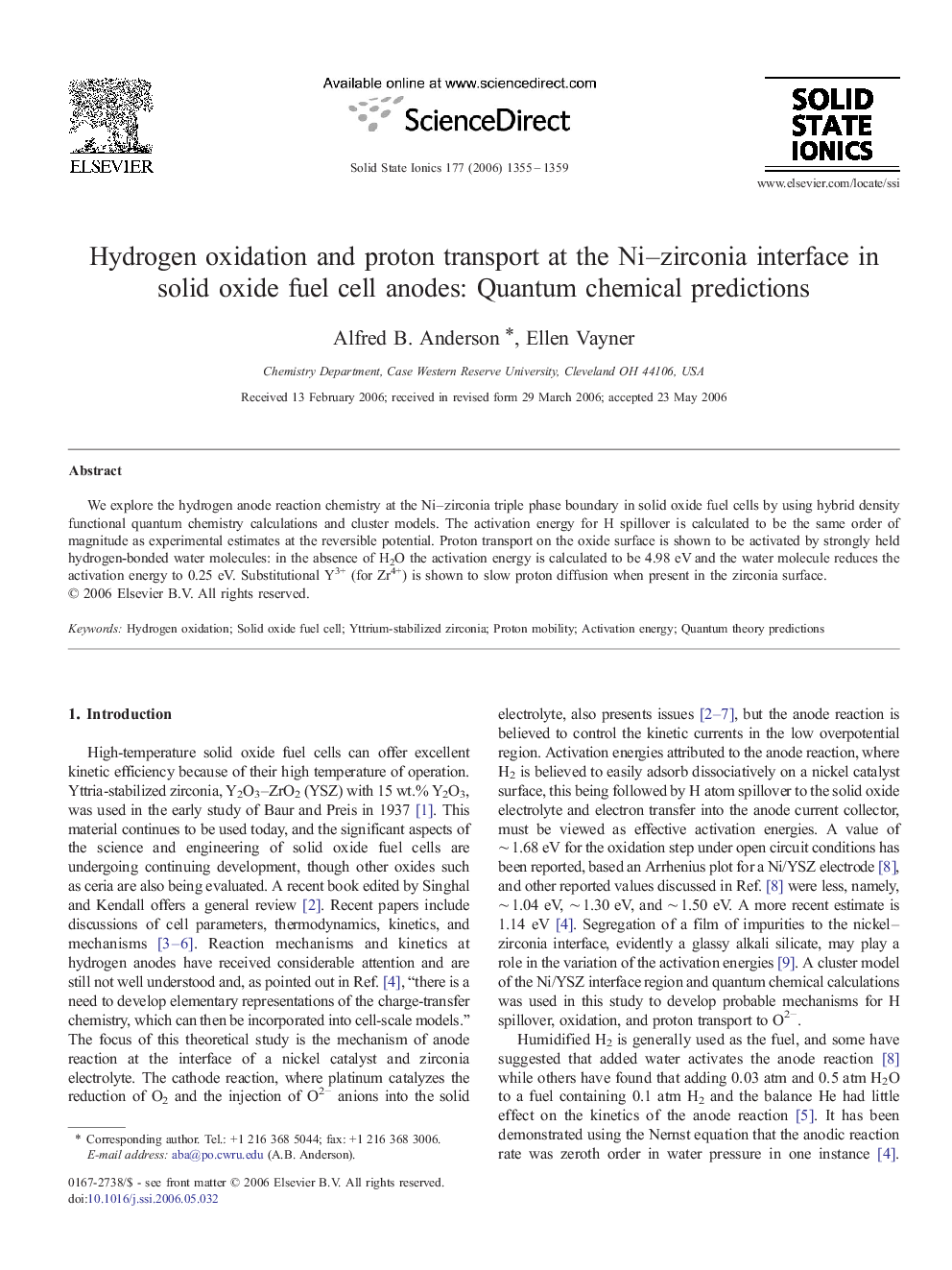| Article ID | Journal | Published Year | Pages | File Type |
|---|---|---|---|---|
| 1297674 | Solid State Ionics | 2006 | 5 Pages |
Abstract
We explore the hydrogen anode reaction chemistry at the Ni–zirconia triple phase boundary in solid oxide fuel cells by using hybrid density functional quantum chemistry calculations and cluster models. The activation energy for H spillover is calculated to be the same order of magnitude as experimental estimates at the reversible potential. Proton transport on the oxide surface is shown to be activated by strongly held hydrogen-bonded water molecules: in the absence of H2O the activation energy is calculated to be 4.98 eV and the water molecule reduces the activation energy to 0.25 eV. Substitutional Y3+ (for Zr4+) is shown to slow proton diffusion when present in the zirconia surface.
Keywords
Related Topics
Physical Sciences and Engineering
Chemistry
Electrochemistry
Authors
Alfred B. Anderson, Ellen Vayner,
